Mars Opposition 2022
A blog of all posts for the 2022 Opposition
Mars Opposition Blog 24 August 2022
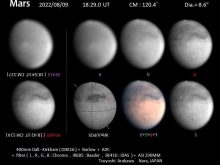
We welcome several new contributors whose names have been added to the list, posted with the July 12 update. There are now 42 active observers.
The SPC has become rather small, and in less good seeing it is not well shown in the images. This particularly applies to views around longitude 200 degrees, where the asymmetric cap remnant is much closer to the limb. A recent image of the cap by J.Sussenbach portrays it sharply on Aug 19.
The cap edge storms have now abated, but on Jul 28 and 29 J.Warell (52 cm refl., Sweden) caught some local dust in southern Chryse-Xanthe which may have impinged upon the Valles Marineris area to the south. I post his Jul 29 image here. An alert was posted on the BAA Forum page on July 30, but the event did not spread, being of brief duration.
Recent images nicely show the Arsia Mons orographic cloud: see the series by T.Arakawa posted here, particularly the blue light image. In 2020 during Ls = 268-309, advantageous geometry allowed the cloud and its ground shadow to be imaged both at the evening terminator and the morning terminator, either side of opposition. As of Aug 29, Ls = 294. The Arsia Mons orographic cloud existed until Ls = 318 in 2020 and until Ls = 312 in 2005. It will be very useful to determine its limits this opposition.
The enlarged Oxia Palus and the ‘canal’ to its north connecting it to Mare Acidalium remain prominent, and well shown by the image by E.Morales posted here. F.J.Melillo’s images of Aug 4 show the Solis Lacus region remains very similar to 2020.
The delicate contrasts around Elysium are shown in a recent enhanced image by P.Tickner. This also sharply resolves Gomer Sinus.
An interesting phenomenon at this stage of the martian year is the partial transparency of the N. polar hood. In G.Walker’s RGB image this ‘Dawes’s slit effect’ is illustrated for the longitude of Mare Acidalium. The bluish hood is less obvious at other longitudes: see for example the image by D.Basey.
Finally, if your images or scanned drawings are exactly 800 pixels wide it makes uploading them to these pages much easier.
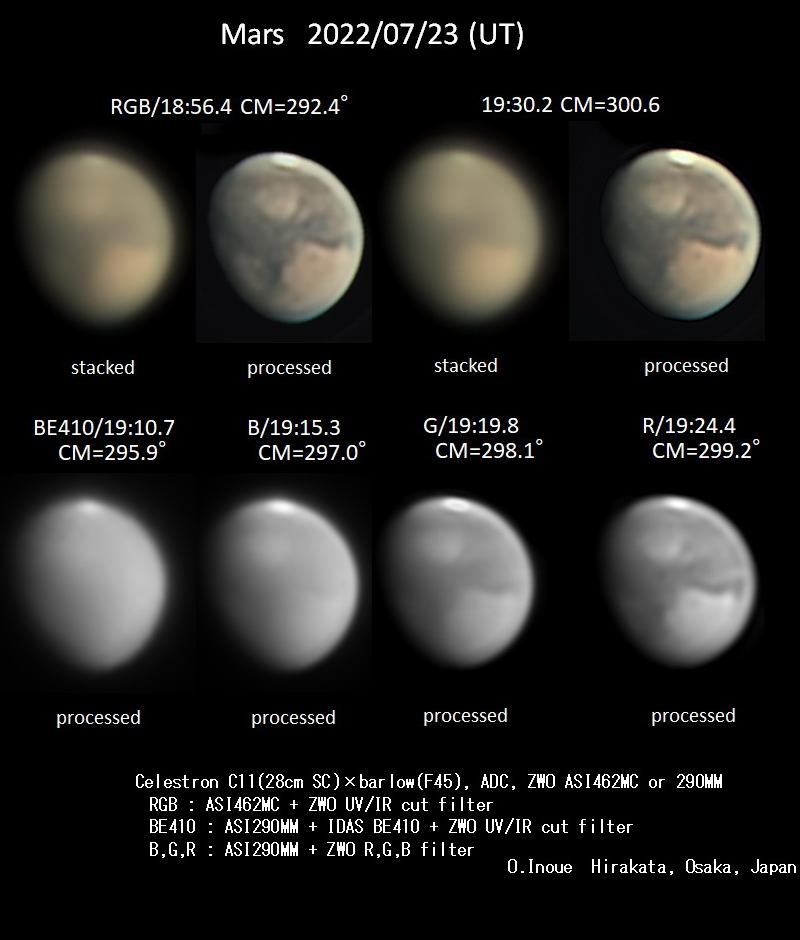
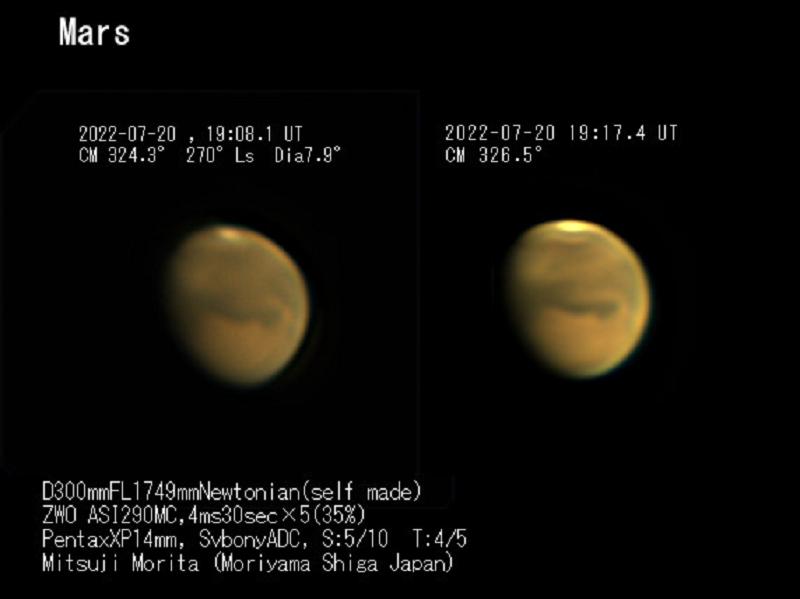

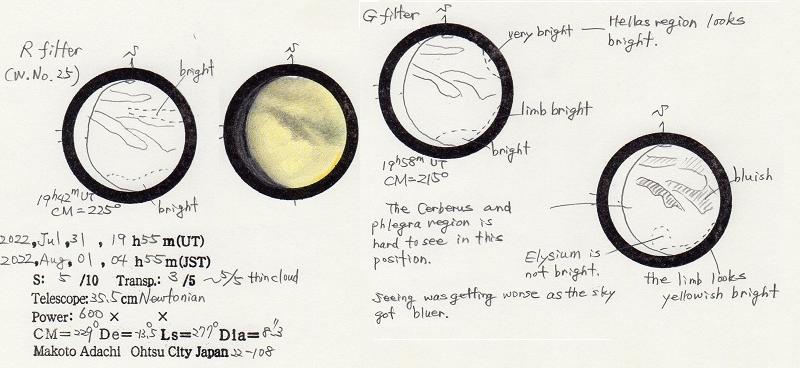
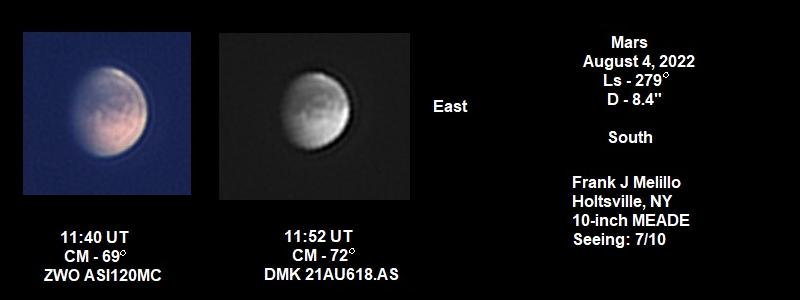
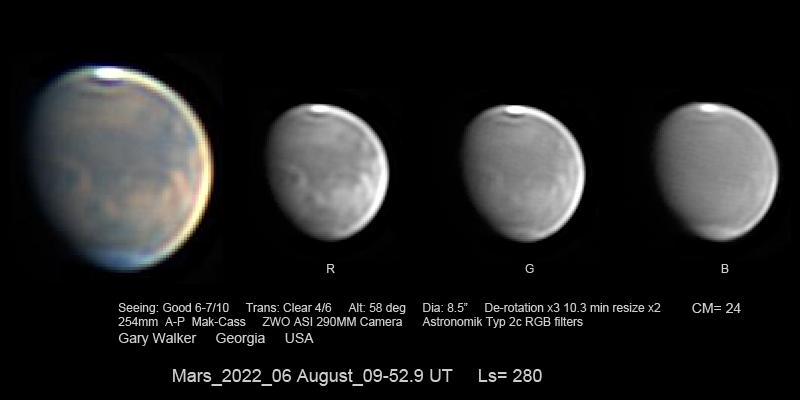
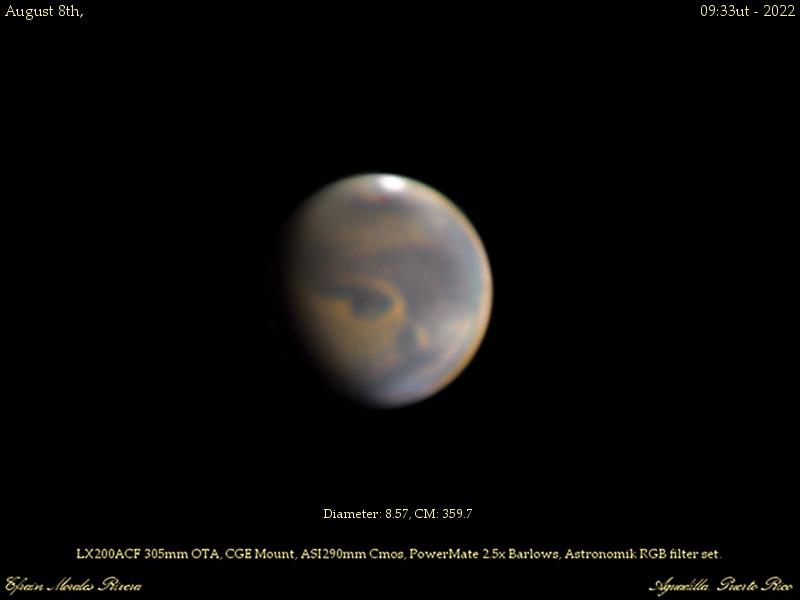
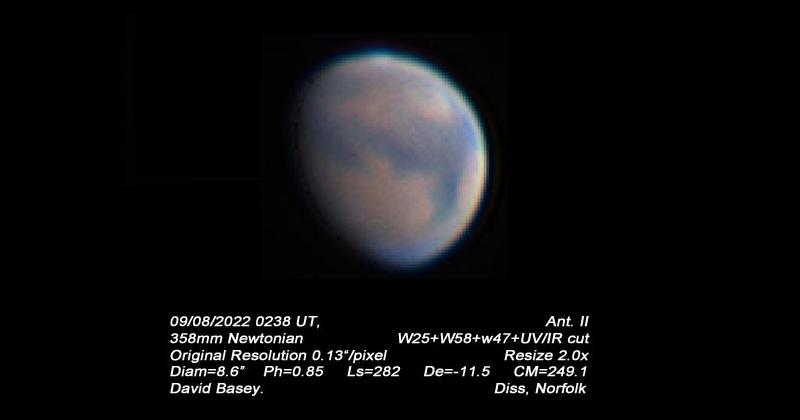
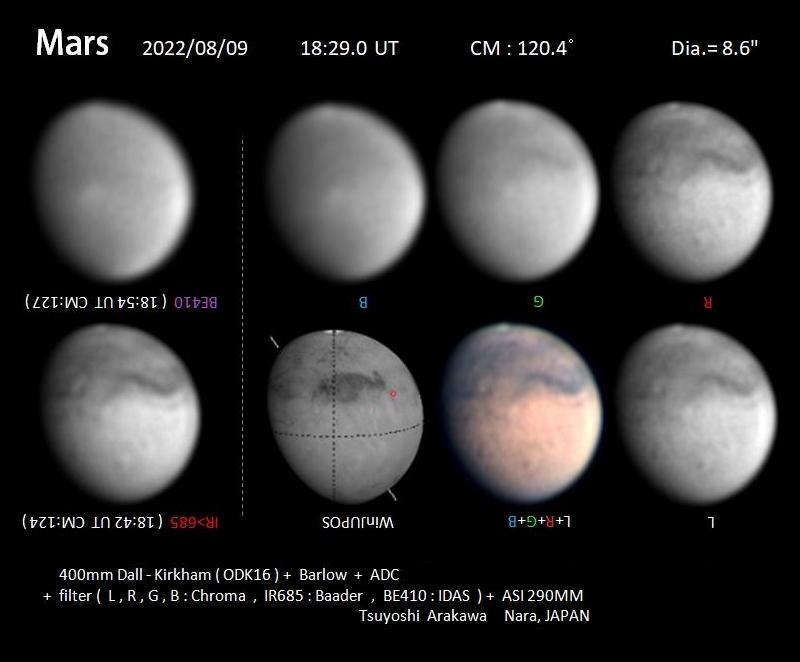

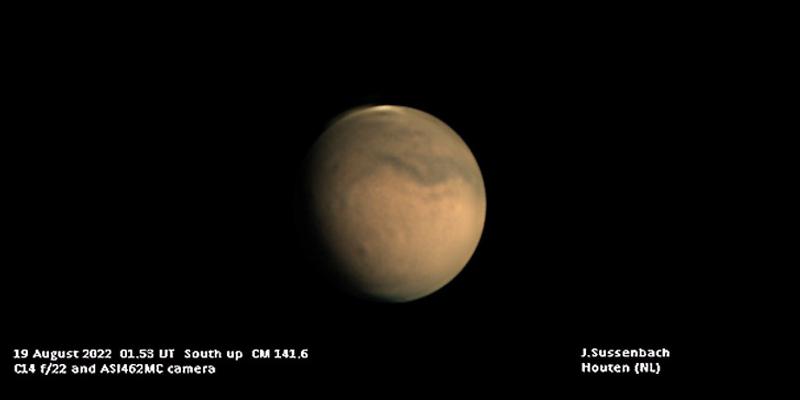
Entire Mars Opposition 2022 blog
Mars Opposition Blog 2022 July 24
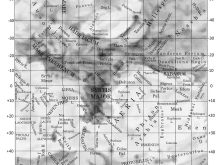
There is little to add to the previous post, except that signs of dust activity around the edge of the retreating SPC are abating.
Today, we are posting a set of hand-drawn maps by Makoto Adachi on the Maps page. These already appear at his Mars Section pages of the ALPO Japan Mars website.
Makoto Adachi’s newly drawn albedo maps (completed Spring 2022) bring the classic Ebisawa map of 1957 up to date, and offer versions with or without the classic nomenclature. We have been given permission by Adachi to upload the maps here. The maps consist of three sectors of the planet either with or without Ebisawa’s telescopic nomenclature. (The Director gave some help with checking of the latter.) These new maps fall under the headings of “MRO public image” maps, which are the best resolution maps (with and without names), or “Mars Maps for visual observation”, which are presented at reduced resolution so as to closely confirm to telescopic observation. North up and south up versions are available. In a significant addition to the Ebisawa map, Adachi also presents N. and S. polar projections.
Mars Opposition Blog 2022 July 12
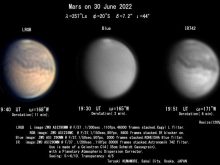
The number of observers continues to slowly increase, but temporal and longitudinal coverage by our team remain inadequate. An updated list of (32) observers is to be found below.
The regional storm reported on May 25 (announced by the Director on the BAA Forum the following day) lasted only a few days beyond the previous update.
The recessing SPC contains a number of seasonal rifts and bright patches. The rift near longitude 60 degrees has been observed.
Separation of Novus Mons (the ‘Mitchell Mountains’) has again occurred on time, as far as could be judged upon the small disk. Images by C.Foster (S.Africa) show it separated from June 2 onwards, when he caught it upon the (morning) limb: one of his results (June 26) is posted here. Separation is better judged at the terminator, but we had no observations of the (evening) terminator at the critical time. On June 29 J.Sussenbach (Netherlands) drew attention to the odd appearance of the W. end of Novus Mons, the latter feature being drawn out into a streak, suggestive of a banner cloud effect but probably showing dust-lifting, and this was also shown upon images from Japan (posted at the ALPO Japan website) a few days earlier. At a different longitude there has been clear evidence of dust activity near the cap: witness the late June images by T.Kumamori (Japan) which show a bright yellowish patch whose W. end is drawn out into a streak. Herewith images by Sussenbach (June 29), Kumamori (June 30) and J-J.Poupeau (July 8).
As I finish this note, an image by J.Willinghan (USA) shows the latter dust activity extending round to the longitude of Hellas. Another BAA Forum post was made today to draw the attention of observers to these polar dust storms.
A collection of images of the approaching planet (2022-March-May) by M.Lonsdale (Australia) is also posted this time.
Our contributors:
| P.G.Abel | UK |
| M.Adachi | Japan |
| T.Arakawa | Japan |
| K.N.L.Bailey | UK |
| D.R.Basey | UK |
| M.A.Bianchi | Italy |
| A.Casely | Australia |
| A.Cidadão | Portugal |
| C.Dole | UK |
| C.Foster | South Africa |
| C.Go | Philippines | P.Gorczynski | USA |
| D.Gray | UK |
| N.J.Haigh | UK |
| R.Hillebrecht | Germany |
| M.Hood | USA | O.Inoue | Japan |
| S.Ito | Japan |
| T.Kumamori | Japan |
| M.Lonsdale | Australia |
| S.Lukas | Australia |
| N.MacNeill | Australia |
| S.Macsymowicz | France |
| P.W.Maxson | USA |
| F.J.Melillo | USA |
| D.Milika & P.Nicholas | Australia |
| E.Morales | Puerto Rico | M.Morita | Japan |
| Y.Morita | Japan |
| D.A.Peach | UK |
| M.Piccoli | Italy |
| J-J.Poupeau | France |
| M.Radice | UK |
| E.Sussenbach | Dutch Caribbean |
| J.Sussenbach | Netherlands |
| P.Tickner/td> | UK |
| J.Tomney | USA |
| V.della Vecchia | Italy |
| G.Walker | USA |
| J.Willinghan | USA |
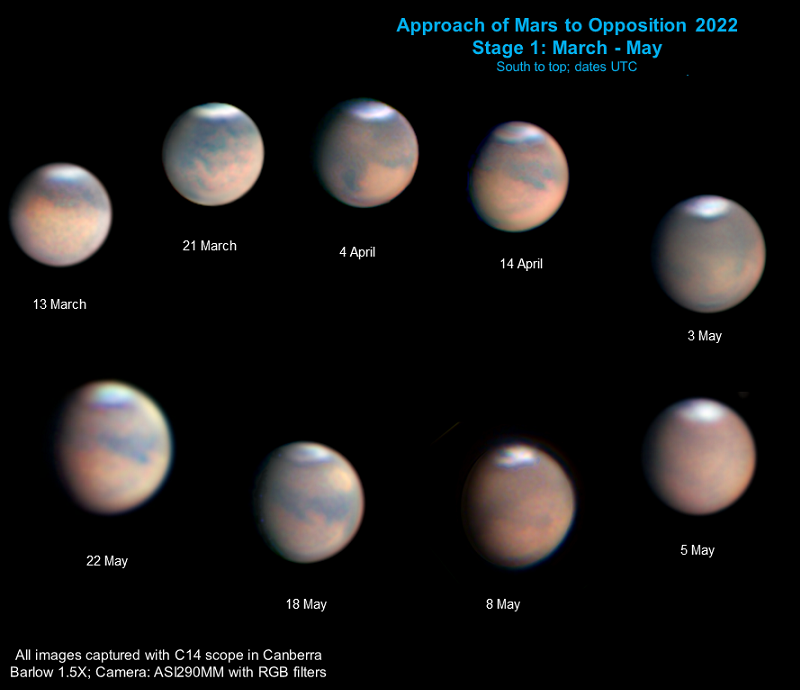
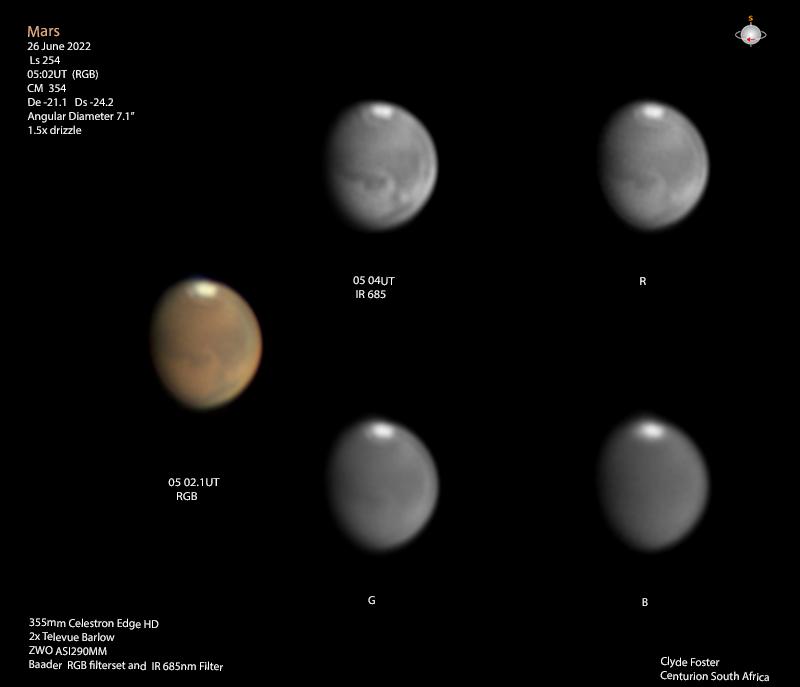
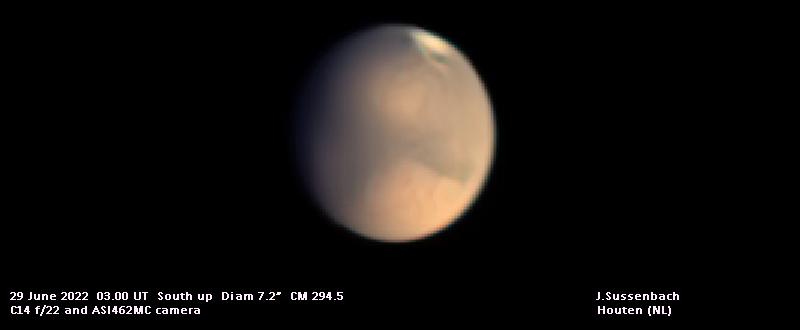
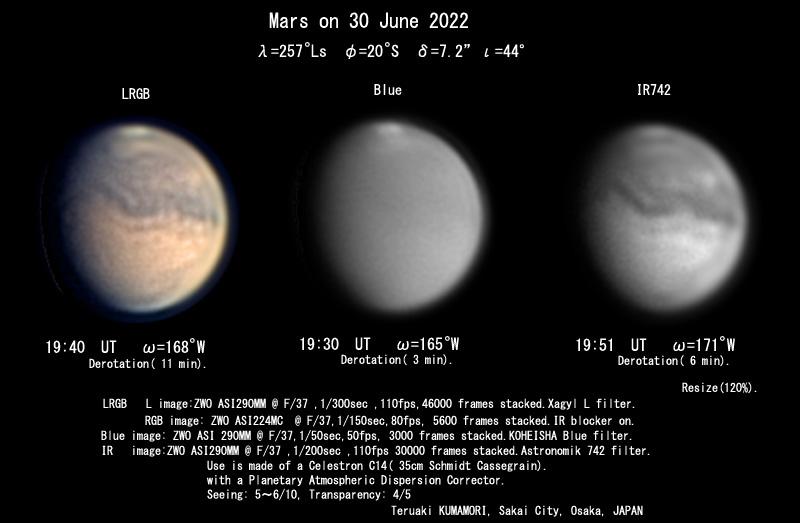
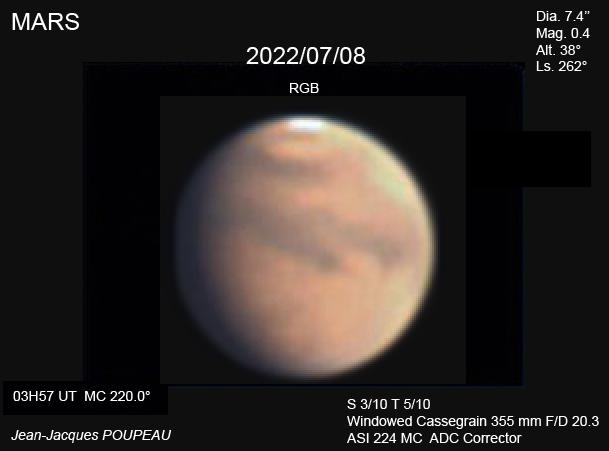

Richard McKim, Director
Mars Opposition Blog 2022 May 25
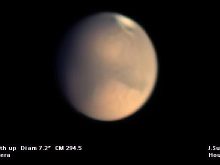
To date, 19 observers have contributed, and the planet’s diameter has now exceeded 6 arcseconds.
The SPC is subliming on schedule, with the usual seasonal rifts and dark patches. Around Ls = 239o Novus Mons will become fully detached from the cap by one such rift, but at the time of writing separation is not complete. There has been local dust activity over the SPC, as we have seen in several past perihelic oppositions. This activity has been followed by Foster, whose first sighting of a small distinct light orange patch close to the S. pole was on April 12. Later this specific bright area was replaced by a general orange tint over part of the cap, indicative of fallout, and the coloration has since disappeared.
Of the surface features, the Sinus Gomer has now been resolved. This and other markings seem to be identical to their appearance at opposition in 2020.
Hellas has again been the centre of dust activity. On April 29 there was no definite activity upon Maxson’s images. On April 30 Haigh (UK) and Cidadao (Portugal) caught a bright area in its NE corner, upon the morning side of the disk. The area expanded and brightened over the next few days, till at least May 7 on Cidadao’s images, while the basin was still light but static (indicating fallout) to Arakawa, Lonsdale and MacNeill (etc.) on May 13-18. There is evidence of other activity to the west, for Casely’s images of May 1 show what appears to be an E-W belt of dust in Chryse-Xanthe, and Lonsdale on May 2-5 shows it impinging upon the maria to the south with some dust diffusion and partial obscuration of Margaritifer Sinus. Adachi saw dust there visually on May 4.
As of today, May 25, fresh regional dust activity has begun over Chryse-Xanthe. This was first recorded by Cidadao on May 23, and its expansion was evident in his images the following day, when the event was confirmed by Haigh. It has looked extremely bright in red and infrared, and its expansion occurred to the south in typical fashion, affecting the central and eastern parts of Valles Marineris. It might expand further!
Observers of Mars, 2022
| T.Arakawa | Japan |
| A.Casely | Australia |
| A.Cidadao | Portugal |
| C.Foster | South Africa |
| C.Go | Philippines |
| D.Gray | UK |
| N.Haigh | UK |
| S.Ito | Japan |
| M.Lonsdale | Australia |
| S.Lukas | Australia |
| N.MacNeill | Australia |
| P.W.Maxson | USA |
| F.J.Melillo | USA |
| D.Milika & P.Nicholas | Australia |
| Y.Morita | Japan |
| D.A.Peach | UK |
| E.Sussenbach | Dutch Caribbean |
Those in bold sent observations; others are past contributors who post online.
I hope to post some images later!
Richard McKim, Director
Mars Opposition Blog 2022 March 25

A summary of what to look for this opposition is appearing in the 2022 April BAA Journal, which will be delivered in a few days.
Makoto Adachi has hand-drawn a remarkable new albedo map based upon recent spacecraft data, and has spent many hours adding the telescopic nomenclature by Ebisawa. In the course of helping to check the names on the map, he and I noticed that a very small number of his named features on the map do not appear in his published list of features, and vice versa. We shall publish this map online later, with his consent.
In February the Director had his wooden observatory dome damaged by fallen trees, and he asks if any BAA readers living locally would be in a position to offer any help with repairs? I have so far been unable to interest any local Northants repairer in the job. If you can help, or know somebody who could, please contact me!
Richard McKim, Director
| The British Astronomical Association supports amateur astronomers around the UK and the rest of the world. Find out more about the BAA or join us. |
